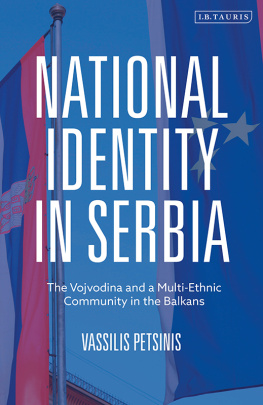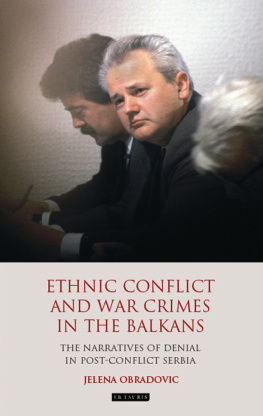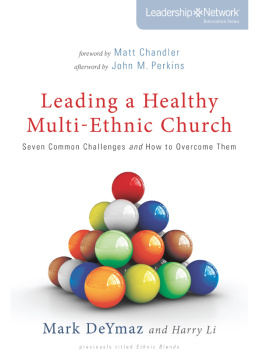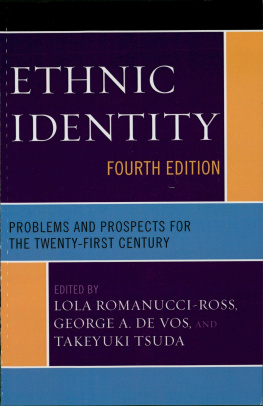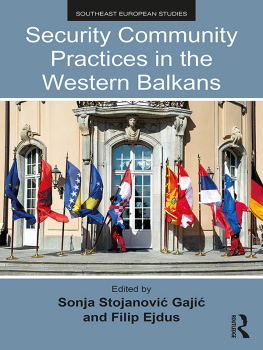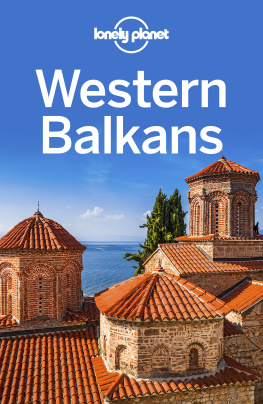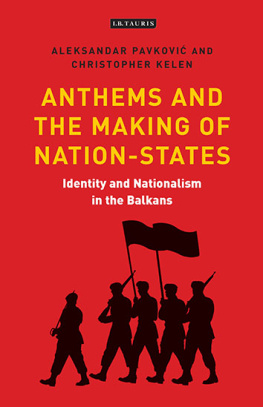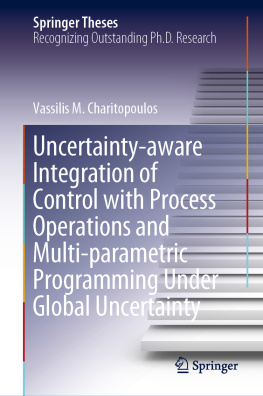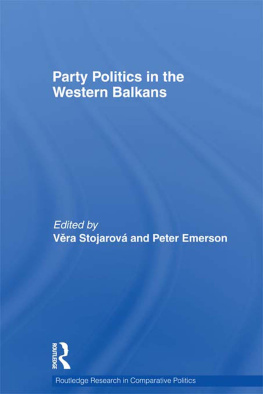Vassilis Petsinis - National Identity in Serbia: The Vojvodina and a Multi-Ethnic Community in the Balkans
Here you can read online Vassilis Petsinis - National Identity in Serbia: The Vojvodina and a Multi-Ethnic Community in the Balkans full text of the book (entire story) in english for free. Download pdf and epub, get meaning, cover and reviews about this ebook. year: 2019, publisher: I.B. Tauris, genre: Politics. Description of the work, (preface) as well as reviews are available. Best literature library LitArk.com created for fans of good reading and offers a wide selection of genres:
Romance novel
Science fiction
Adventure
Detective
Science
History
Home and family
Prose
Art
Politics
Computer
Non-fiction
Religion
Business
Children
Humor
Choose a favorite category and find really read worthwhile books. Enjoy immersion in the world of imagination, feel the emotions of the characters or learn something new for yourself, make an fascinating discovery.
- Book:National Identity in Serbia: The Vojvodina and a Multi-Ethnic Community in the Balkans
- Author:
- Publisher:I.B. Tauris
- Genre:
- Year:2019
- Rating:4 / 5
- Favourites:Add to favourites
- Your mark:
- 80
- 1
- 2
- 3
- 4
- 5
National Identity in Serbia: The Vojvodina and a Multi-Ethnic Community in the Balkans: summary, description and annotation
We offer to read an annotation, description, summary or preface (depends on what the author of the book "National Identity in Serbia: The Vojvodina and a Multi-Ethnic Community in the Balkans" wrote himself). If you haven't found the necessary information about the book — write in the comments, we will try to find it.
Vassilis Petsinis: author's other books
Who wrote National Identity in Serbia: The Vojvodina and a Multi-Ethnic Community in the Balkans? Find out the surname, the name of the author of the book and a list of all author's works by series.
National Identity in Serbia: The Vojvodina and a Multi-Ethnic Community in the Balkans — read online for free the complete book (whole text) full work
Below is the text of the book, divided by pages. System saving the place of the last page read, allows you to conveniently read the book "National Identity in Serbia: The Vojvodina and a Multi-Ethnic Community in the Balkans" online for free, without having to search again every time where you left off. Put a bookmark, and you can go to the page where you finished reading at any time.
Font size:
Interval:
Bookmark:

| AER | Assembly of European Regions (Brussels) |
| AVNOJ | The Anti-Fascist Council for the National Liberation of Yugoslavia |
| CPP | The Croatian Peasants Party |
| CPY | The Communist Party of Yugoslavia |
| CUP | Popular Unity Candidacy (Spain) |
| DEPOS | The Serbian Democratic Movement |
| DKMT | The Danube-Maros-Tisa (or Banat) Euroregion |
| DOS | The Serbian Democratic Opposition |
| DPS | The Party of Democratic Socialism (Montenegro) |
| DS | The Democratic Party |
| DSS | The Democratic Party of Serbia |
| ERC | Republican Left of Catalonia (Spain) |
| FIDESZ | Hungarian Civic Alliance (Hungary) |
| GSS | The Civic Alliance of Serbia |
| HDZ | The Croatian Democratic Community |
| JNA | The Yugoslav National Army |
| JUL | The Yugoslav United Left |
| KLA | The Kosovo Liberation Army |
| Kosmet | Kosovo and Metohija |
| LC | League of Communists |
| LCY | The League of Communists of Yugoslavia |
| LDK | The Parliamentary Party of Kosovo |
| LSDV | The League of Vojvodinas Social-Democrats |
| NDH | The Independent State of Croatia |
| NPP | The National Peasants Party |
| NRP | The National Radical Party |
| OSCE | The Organization for Security and Cooperation in Europe |
| PKK | The Kurdish Workers Party (Turkey) |
| RDSV | The Reformist-Democratic Party of Vojvodina |
| Republika Srpska | The Bosnian Serb Republic |
| RTS | The Serbian Radio-Television |
| SAP | Socialist Autonomous Province |
| SNP | Socialist National Party (Montenegro) |
| SNS | Serbian Progressive Party |
| SPO | The Serbian Renewal Movement |
| SPS | The Socialist Party of Serbia |
| SR | Socialist Republic |
| SRS | The Serbian Radical Party |
| UNHCR | The United Nations High Commission for Refugees |
| VANU | Vojvodinas Academy of Sciences |
| VMDK | The Democratic Community of Vojvodinas Hungarians |
| VMSZ | The Alliance of Hungarians in Vojvodina |
Font size:
Interval:
Bookmark:
Similar books «National Identity in Serbia: The Vojvodina and a Multi-Ethnic Community in the Balkans»
Look at similar books to National Identity in Serbia: The Vojvodina and a Multi-Ethnic Community in the Balkans. We have selected literature similar in name and meaning in the hope of providing readers with more options to find new, interesting, not yet read works.
Discussion, reviews of the book National Identity in Serbia: The Vojvodina and a Multi-Ethnic Community in the Balkans and just readers' own opinions. Leave your comments, write what you think about the work, its meaning or the main characters. Specify what exactly you liked and what you didn't like, and why you think so.

